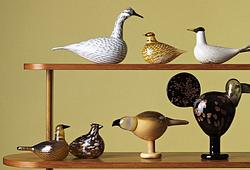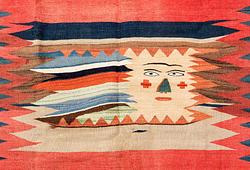Anders Zorn
"Sommar" (Summer)
Signed Zorn and dated Dalarö -87. Watercolour hightened with white 67 x 38 cm.
Provenance
Earlier in the Jacques Lamms collection, Stockholm (bought directly from the artist).
Mrs Galatée Lamms (Jacques widow) collection, Stockholm.
Engineer Carl Robert Lamms (Jacques and Galatées son) collections, Näsby castle, Uppland.
Neumans Konsthandel, Stockholm.
Royal vice-consul Ture Mechelsens collection, Kristianstad.
Thereafter inherited within the family to the present owner.
Exhibitions
(Probably) "Gammalt och nytt", Uppsala, 1906, cat no 32.
Liljevalchs Konsthall, Stockholm, "Invigningsutställning. Larsson-Liljefors-Zorn", March - April 1916, cat no 11.
Zornmuseet, Mora, "Anders Zorn 1860-1960. Minnesutställning" 18 February - 15 August 1960, cat no 72.
Thielska Galleriet, Stockholm, exhibition with the Zorn collection in Mora together with Thielska Galleriet, April - May 1975, cat no 20.
Zornmuseum, Mora, "Zorns mästerverk", 13 May - 14 September 2010.
Prins Eugens Waldemarsudde, Stockholm, "Zorns mästerverk", 23 October 2010 - 30 January 2011.
Literature
Tor Hedberg, "Anders Zorn. En studie", 1901, illustrated full page 21 (under the title "Badande kvinnor").
"Små konstböcker No 6. Anders Zorn -60 reproduktioner i tontryck efter fotografier af originalen", 1909, illustrated full page.
Ernst Malmberg, "Larsson-Liljefors-Zorn. En återblick", 1919, mentioned page 93-94 and illustrated full page.
Nordisk familjebok, volume 33, 1922, mentioned page 854 and illustrated Fig. 5 page 856.
Tor Hedberg, "Anders Zorn. Ungdomstiden 1860-1893", SAK, 1923, mentioned page 92-94 and illustrated full page, page 93.
Georg Nordensvan, "Svensk konst och svenska konstnärer i nittonde århundradet", volume II. 'Från Karl XV till sekelskiftet', 1928, mentioned page 361 and illustrated half page 360.
Gerda Boëthius, "ZORN -Tecknaren, Målaren, Etsaren, Skulptören", 1949, mentioned page 236-238 and 346 and illustrated full page fig. 85, listet in the catalogue part under the year 1887, page 543.
"Mästare i Svensk konst. Anders Zorn. Marcus Larson", 1950, mentioned page 64.
Hans Henrik Brummer, "Zorn -Svensk målare i världen", 1975, mentioned and illustrated.
Anders Zorn, "Självbiografiska anteckningar" (published and commented by Hans Henrik Brummer), 1982, mentioned page 186.
Inger Fredriksson, "Anders Zorn -Mannen, Mästaren, Myten", 1984, mentioned page 33 and illustrated full page, page 35.
Hans Henrik Brummer, "ZORNMCMLXXXIX", 1989, mentioned and illustrated page 113.
Hans Henrik Brummer, "Till ögats fröjd och nationens förgyllning - Anders Zorn", 1994, mentioned and illustrated half page, page 138 and mentioned in chronology page 292.
More information
-
Designer
Anders Zorn, born in Mora in 1860, showed artistic talent from a young age. In 1875, he traveled to Stockholm and became a student at the then Slöjdskolan (now Tekniska högskolan) in Stockholm, and shortly after, he joined the Royal Academy of Fine Arts. Initially, Zorn had aspirations of becoming a sculptor, but soon watercolor painting took over, becoming his primary medium until 1887. At the student exhibition in 1880, Zorn had his breakthrough with the watercolor painting "I sorg." The following year, he gained international acclaim as a portrait painter. His watercolor painting reached its pinnacle during this period, and his most famous work from this time is "Vårt dagliga bröd” from 1886. Shortly thereafter, Zorn transitioned to oil painting, which was met with immediate success. Zorn's reputation mainly rested on his portrait art, and he portrayed many notable figures, including presidents. For instance, he created an etching of Theodore Roosevelt. His etchings significantly contributed to his success. In the late 1880s, Zorn began working in the genre that would increasingly become his trademark: nude figures in outdoor settings. He had long been fascinated by the movement of water and the reflections of light on its surface. Now, he added the complexity of placing a model near or in the water, aiming to depict a synthesis between nature and humanity. In 1896, Zorn and his wife moved back to Sweden and settled in Zorngården in Mora. This move sparked a renewed interest in his homeland, which would be reflected in his future paintings. Among the artist's scenes from the Mora region, portraying its local customs and ancient traditions, "Midsommardansen" holds the highest value according to Zorn himself. Today, the painting can be found at the National Museum.
Read more






























